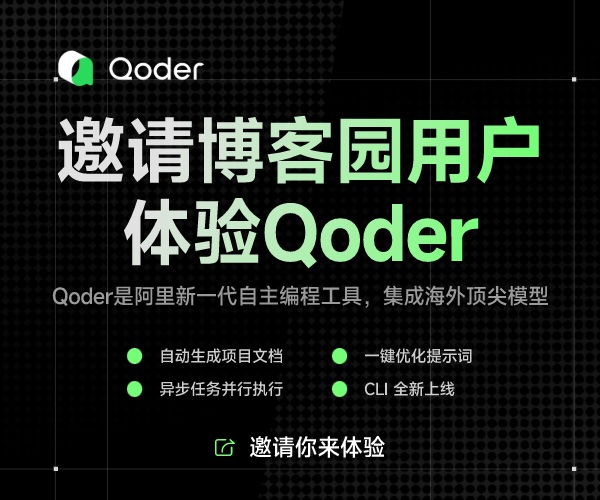DXUT框架剖析(5)
修改可用的設備
應用程序可以通過DXUTSetCallbackDeviceChanging()設置回調函數來修改Direct3D設備的創建設置:
Sets a callback function that allow the application to change the device settings before the device is created.
VOID DXUTSetCallbackDeviceChanging(
LPDXUTCALLBACKMODIFYDEVICESETTINGS pCallbackModifyDeviceSettings,
void* pUserContext
);
Parameters
- pCallbackModifyDeviceSettings
- [in] Pointer to a LPDXUTCALLBACKMODIFYDEVICESETTINGS callback function. If the callback function is supplied, it will be called before the Direct3D device is created. If NULL, DXUT will not notify the application about device changes.
- pUserContext
- [in] Pointer to a user-defined value which is passed to the callback function. Typically used by an application to pass a pointer to a data structure that provides context information for the callback function. The default value is NULL
Return Values
No return value.
Remarks
Before a device is created by DXUT, the LPDXUTCALLBACKMODIFYDEVICESETTINGS callback will be called to allow the application to examine or change the device settings before the device is created. This allows an application to modify the device creation settings as it sees fit.
This callback also allows applications to reject changing the device altogether. Returning false from inside this callback will notify DXUT to keep using the current device instead of changing to the new device.
LPDXUTCALLBACKMODIFYDEVICESETTINGS
Application-defined callback function, called by DXUT to allow changes in device settings before the device is created.
bool LPDXUTCALLBACKMODIFYDEVICESETTINGS(
DXUTDeviceSettings * pDeviceSettings,
void* pUserContext
);
Parameters
- pDeviceSettings
- [in] Pointer to a DXUTDeviceSettings structure that contains the settings for the new device.
- pUserContext
- [in] Pointer to a user-defined value which is passed to the callback function. Typically used by an application to pass a pointer to a data structure that provides context information for the callback function. The default value is NULL
Return Values
Program the application to return true to continue creating the device. If not, the application should return false to continue using the current device if one exists.
Remarks
Before a device is created by DXUT, the LPDXUTCALLBACKMODIFYDEVICESETTINGS callback will be called to allow the application to examine or change the device settings before the device is created. This allows an application to modify the device creation settings as it sees fit.
This callback also allows applications to reject changing the device altogether. Returning false from inside this callback will notify DXUT to keep using the current device instead of changing to the new device.
Anything in pDeviceSettings can be changed by the application. DXUT will not prevent the failure of device creation caused by changes to device settings.
DXUTDeviceSettings
A union of settings describing how to create the Direct3D 9 or Direct3D 10 device.
typedef struct DXUTDeviceSettings {
DXUTDeviceVersion ver;
union {
DXUTD3D9DeviceSettings d3d9;
DXUTD3D10DeviceSettings d3d10;
};
} DXUTDeviceSettings, *LPDXUTDeviceSettings;
Members
- ver
- Indicates whether the settings structure is for a Direct3D 9 or Direct3D 10 device.
- d3d9
- Device settings for Direct3D 9 device. Only valid if ver is DXUT_D3D9_DEVICE.
- d3d10
- Device settings for Direct3D 10 device. Only valid if ver is DXUT_D3D10_DEVICE.
Remarks
The DXUTDeviceSettings can only describe a single device because the DXUTD3D9DeviceSettings and DXUTD3D10DeviceSettings member variables are unioned together. The DXUTDeviceVersion indicates which of these structures is valid.
DXUTD3D9DeviceSettings
Describes the settings used to create a Direct3D 9 device.
typedef struct DXUTD3D9DeviceSettings {
UINT AdapterOrdinal;
D3DDEVTYPE DeviceType;
D3DFORMAT AdapterFormat;
DWORD BehaviorFlags;
D3DPRESENT_PARAMETERS pp;
} DXUTD3D9DeviceSettings, *LPDXUTD3D9DeviceSettings;
Members
- AdapterOrdinal
- Ordinal number that denotes the display adapter.
- DeviceType
- Enumerated type of the device.
- AdapterFormat
- Adapter surface format.
- BehaviorFlags
- Behavior flags. This member can be a combination of one or more of the D3DCREATE values.
- pp
- Presentation parameters structure.
DXUT fills this structure with valid values, and then passes the structure to the callback function where the application can modify it. Be sure to validate any changes your application makes in this callback function. Here is an example that changes the depth-stencil format.
bool CALLBACK ModifyDeviceSettings(
DXUTDeviceSettings* pDeviceSettings,
void* pUserContext )
{
if( pDeviceSettings->ver == DXUT_D3D9_DEVICE )
{
IDirect3D9* pD3D = DXUTGetD3DObject();
if( SUCCEEDED( pD3D->CheckDeviceFormat(
pDeviceSettings->d3d9.AdapterOrdinal, pDeviceSettings->d3d9.DeviceType,
pDeviceSettings->d3d9.AdapterFormat, D3DUSAGE_DEPTHSTENCIL,
D3DRTYPE_SURFACE, D3DFMT_D24S8 ) ) )
{
if( SUCCEEDED( pD3D->CheckDepthStencilMatch(
pDeviceSettings->d3d9.AdapterOrdinal, pDeviceSettings->d3d9.DeviceType,
pDeviceSettings->d3d9.AdapterFormat, pDeviceSettings->d3d9.pp.BackBufferFormat,
D3DFMT_D24S8 ) ) )
{
pDeviceSettings->d3d9.pp.AutoDepthStencilFormat = D3DFMT_D24S8;
}
}
}
return true;
}
如果應用程序需要的深度模板格式是D3DFMT_D24S8,那么程序需要確定設備支持它。
回調函數ModifyDeviceSettings()返回一個布爾值,如果應用程序返回TRUE,DXUT框架繼續像在正常情況下那樣進行設備創建。如果返回FALSE,框架不能改變設備,如果已有一個設備,則繼續使用當前設備。如果框架提出的請求是改變到一個應用程序不能使用的設備,應用程序可以拒絕該請求。例如,在一個多顯示器配置中,默認情況下在顯示器之間拖動窗口將使框架改變設備。但如果應用程序不能使用其他設備,它就必須拒絕這種改變并繼續使用當前設備。
降級到軟件頂點處理
Be careful if your hardware supports pixel processing (transforms and lighting) but does not support vertex processing. One common mistake is to reject devices based on the vertex shader version in the (LPDXUTCALLBACKISD3D9DEVICEACCEPTABLE or LPDXUTCALLBACKISD3D10DEVICEACCEPTABLE) callback functions. The correct solution is to implement the checking in the ModifyDeviceSettings callback function as shown here.
bool CALLBACK ModifyDeviceSettings( DXUTDeviceSettings* pDeviceSettings,
void* pUserContext )
{
if( pDeviceSettings->ver == DXUT_D3D9_DEVICE )
{
D3DCAPS9 caps;
DXUTGetD3D9DeviceCaps( pDeviceSettings, &caps );
// If device doesn't support HW T&L or doesn't support 1.1 vertex
// shaders in HW, then switch to SWVP.
if( (pCaps->DevCaps & D3DDEVCAPS_HWTRANSFORMANDLIGHT) == 0 ||
pCaps->VertexShaderVersion < D3DVS_VERSION(1,1) )
{
pDeviceSettings->d3d9.BehaviorFlags = D3DCREATE_SOFTWARE_VERTEXPROCESSING;
}
else
{
pDeviceSettings->d3d9.BehaviorFlags = D3DCREATE_HARDWARE_VERTEXPROCESSING;
}
}
return true;
}



